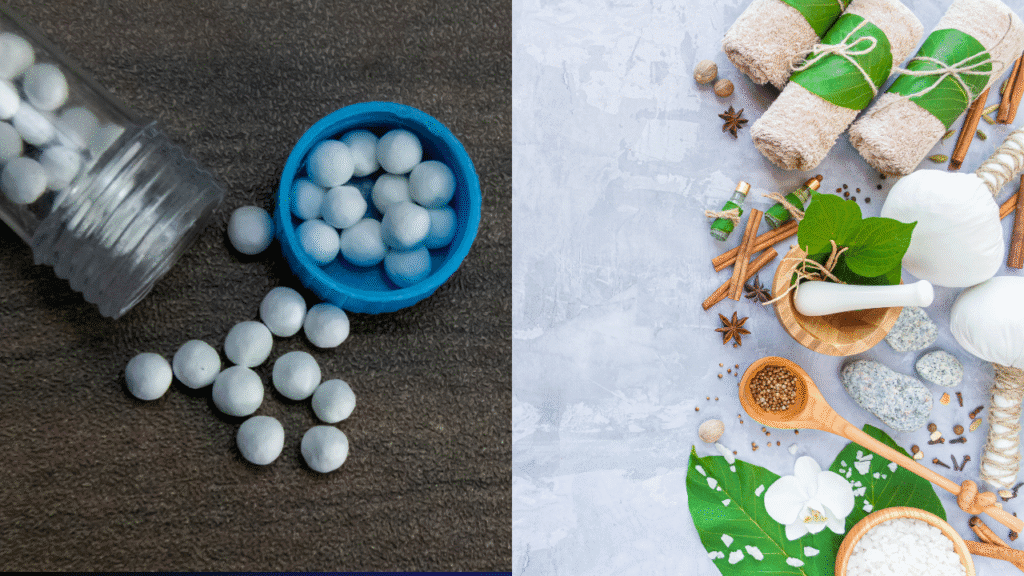
Vitiligo is a chronic skin disorder characterized by white patches due to the loss of melanin-producing cells called melanocytes. While it is not contagious or life-threatening, vitiligo can significantly impact one’s self-esteem and quality of life. When it comes to treating vitiligo, two primary approaches are commonly considered — Ayurvedic and Allopathic. But which one is more effective and safer in the long term?
In this blog, we’ll compare Ayurvedic vs. Allopathic treatments for vitiligo, focusing on their effectiveness, side effects, treatment duration, and overall approach.
Understanding Vitiligo
Cause: Autoimmune disorders, genetic factors, oxidative stress
Symptoms: White patches on the skin, premature graying of hair, sensitivity to sun
Diagnosis: Clinical examination, Wood’s lamp test, blood tests
Allopathic Treatment for Vitiligo
Key Methods:
Topical Corticosteroids: Helps reduce inflammation and stop the immune attack on melanocytes
Phototherapy (NB-UVB): Stimulates repigmentation
Immunosuppressants: Tacrolimus or Pimecrolimus creams
Surgical options: Skin grafts or melanocyte transplantation
Pros:
Fast results in some cases
Backed by scientific research
Widely available in hospitals and clinics
Cons:
Possible side effects like skin thinning, irritation, or infections
Doesn’t treat the root cause
Results may not be permanent
High relapse rate after stopping treatment
Ayurvedic Treatment for Vitiligo
Key Concepts:
In Ayurveda, vitiligo is referred to as Shwitra and is believed to be caused by imbalance in Pitta dosha, impaired digestion (Agni), and toxin accumulation (Ama).
Herbal Medicines & Therapies:
Bakuchi (Psoralea corylifolia): Key herb for skin pigmentation
Manjistha, Neem, Haridra: Purify blood and reduce inflammation
Panchakarma Therapies: Detoxify the body and restore dosha balance
Dietary changes: Avoid dairy + sour foods; promote alkaline diet
Pros:
Treats the root cause
Holistic approach: mind, body, and skin
Minimal or no side effects
Improves overall health and digestion
Cons:
Slower visible results
Requires lifestyle and dietary discipline
Needs expert guidance for herbal formulations
Key Differences Between Ayurvedic and Allopathic Treatments
| Factor | Allopathic | Ayurvedic |
|---|---|---|
| Approach | Symptom-based | Root-cause focused |
| Side Effects | Moderate to high | Minimal |
| Duration | Short-term relief | Long-term healing |
| Relapse Risk | High | Low (if followed consistently) |
| Personalization | Standardized treatment | Individual-specific plans |
Which is Better for Vitiligo?
There’s no one-size-fits-all answer. Allopathic treatment can be effective for quick symptom management, but often comes with side effects and doesn’t cure the condition permanently.
Ayurvedic treatment, on the other hand, focuses on restoring balance in the body, detoxifying the system, and improving immunity — all of which are crucial in long-term vitiligo management.
Ideal Approach?
A combined or integrative approach is often considered best — use Ayurvedic medicine to heal from within, and allopathic treatments as supportive care during flare-ups.
Final Thoughts
Whether you choose Ayurveda or Allopathy for vitiligo depends on your body’s response, the severity of the condition, and your long-term health goals. Consulting with both an experienced dermatologist and a certified Ayurvedic practitioner can help you make an informed decision.
🌿 Remember, vitiligo treatment is a journey — not a quick fix. Holistic healing, consistency, and self-love go a long way.

